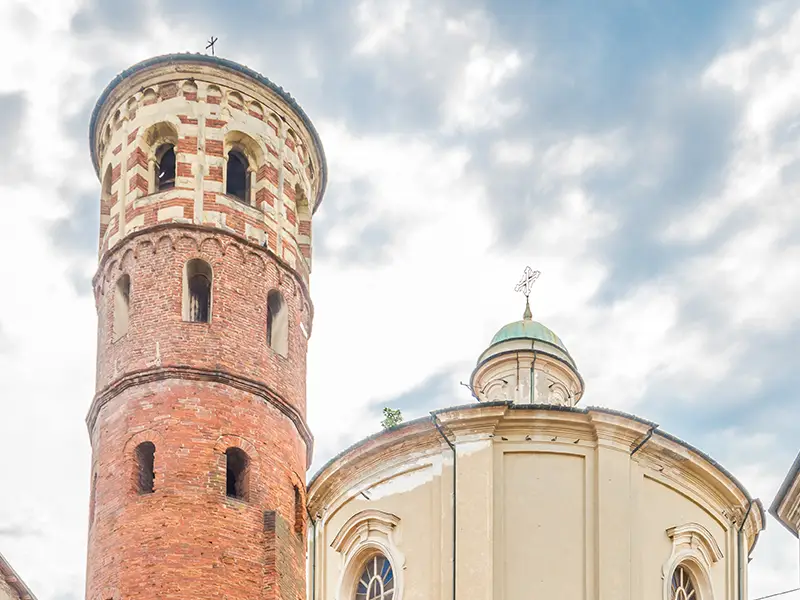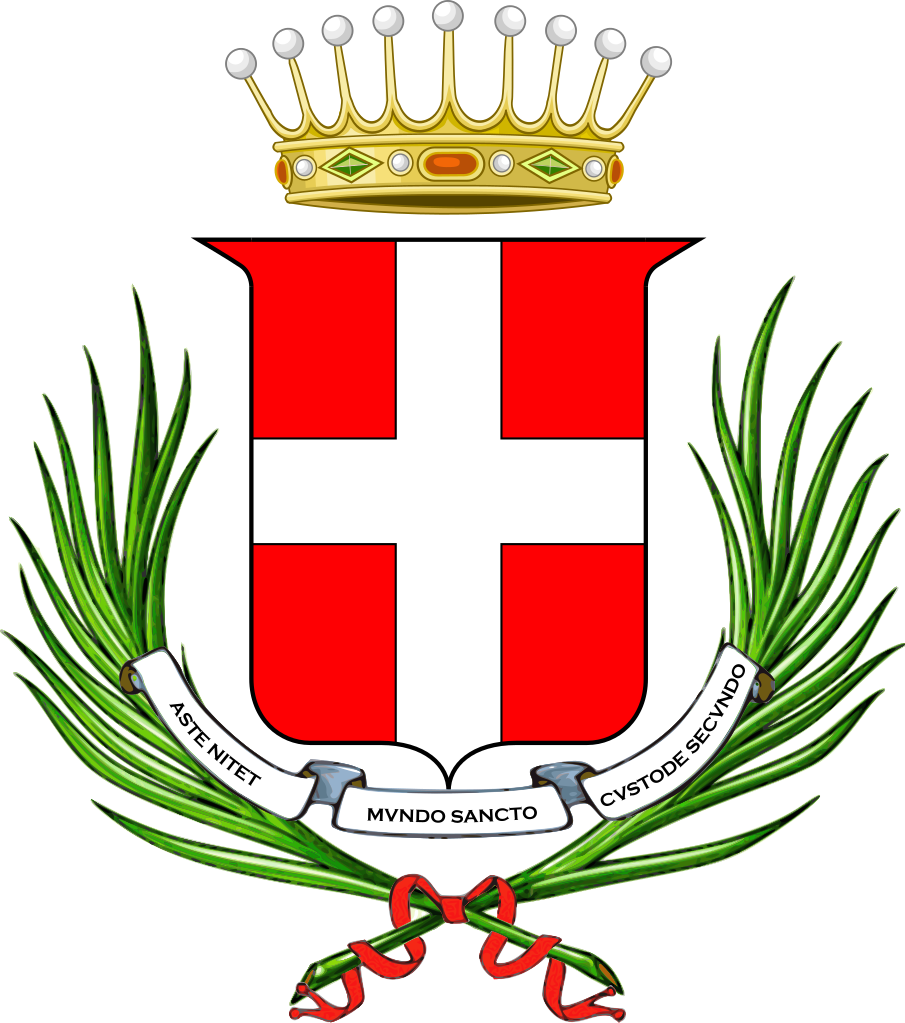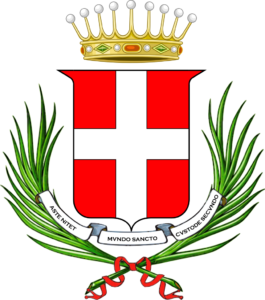The lower part of the tower dates back to the 1st century AD
The only testimony of Roman Asti, from the Augustan age
It is one of the oldest monuments in town
Base and Construction
The lower part of the tower dates back to the 1st century and has a polygonal base with 16 sides.
The upper part was instead built in the 12th century, when Torre Rossa (Red Tower) began to be used as a bell tower for the Chiesa di San Secondo (Collegiate Church of Saint Secundus), function which it still holds today. This section is cylindrical, with alternating strips of cotto and sandstone in white and red polychrome, typical of the Romanesque style of Asti.
Originally, the tower ended with a very pointed gilded copper spire, which was demolished in 1777 because it became unstable.
Testimonies of a Lost Past
The tower, which owes its name to the De Rubeis family, is what remains of the Roman western gate located at the end of the maximum decumanus, the main road that crossed Asti (the ancient Hasta).
It is likely that once there was a second identical tower which formed the entrance door to the city walls (Porta Torre, Tower Gate) with the Red Tower.
In the mid-thirties, the houses leaning against the tower were demolished to show the oldest part. According to the original project, the square formed by the demolition of these houses should have housed a statue of Augustus, to remember the Roman past of the city recalled by the tower, but the project was abandoned.
The Interiors
As soon as you enter the tower you can see the altar with the statue of San Secondo. This was initially located in the underground cell, an area currently sanded and walled to promote greater stability to the construction.









